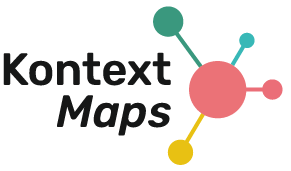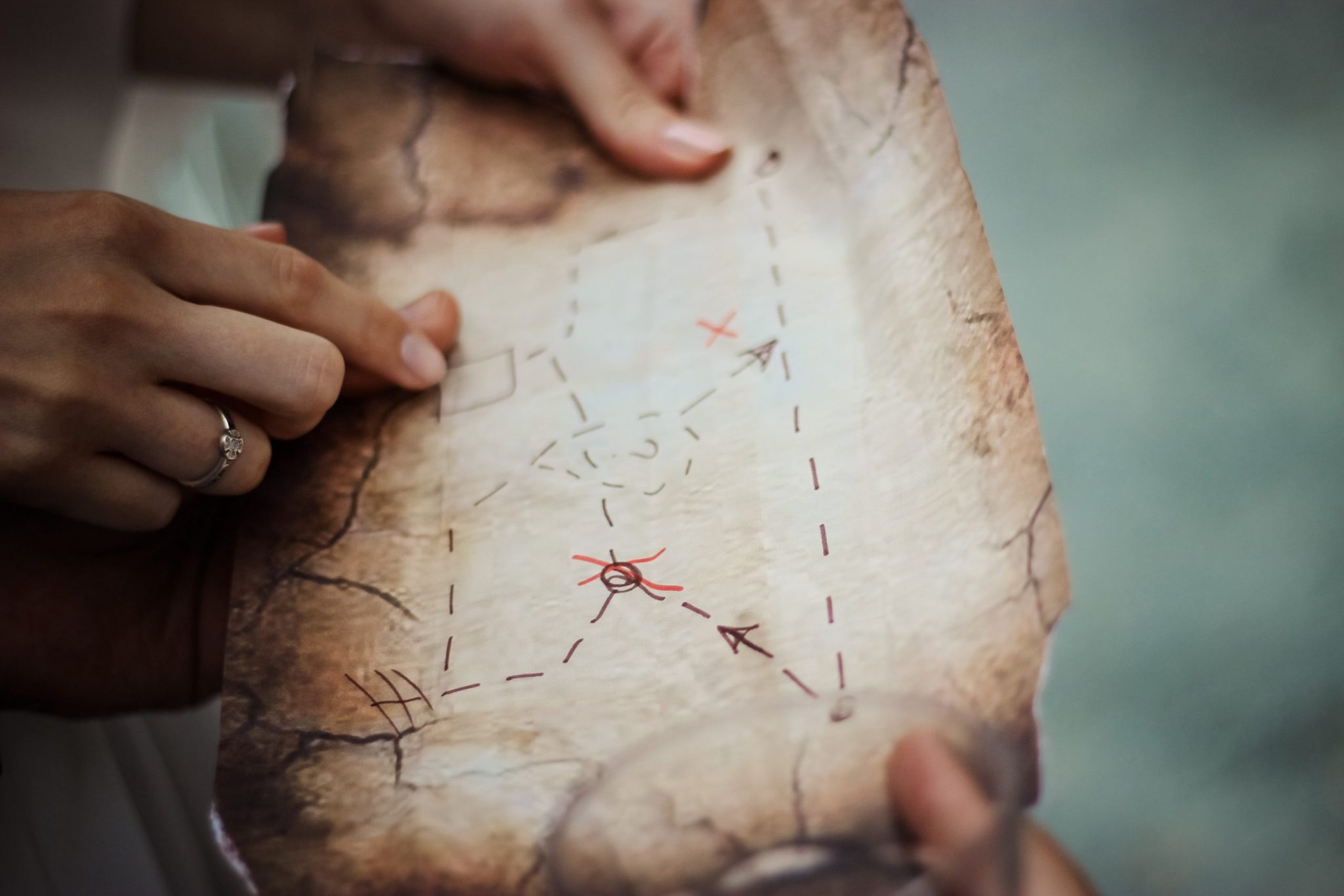We’re sure of it: when we’re dealing with complex topics and issues, maps are the way to go. In some use cases, for instance during meetings or brainstorming, we love creating a KontextMap. While the possibilities are endless with our software, we’ve set up some guiding information that might help you with the general process of creating your first KontextMap. Here, we focus on the general theories of mapping – the why and how of doing it. More specific use case scenarios can be found in the Blog and in the links down below.
Use cases for making a map
Different types of maps are good for different purposes. We enjoy creating KontextMaps in several situations:
- During meetings, either as the sole note taker or in a group context
- For brainstorming important projects and thoughts
- To summarize the contents of for instance a book
- While listening to seminars
To read our detailed guides on those topics, please click on the text.
Why should we create a mind map anyways?
There’s several reasons why maps are useful in the above use cases:
- Making KontextMaps, such as mind maps, supports us in our radiant thinking. This concept, which was created by British psychologist Tony Buzan, argues that our thoughts spread out from the center of our brains: they radiate. When we combine skills of logic and creativity like we do in mind maps, we combine both the left and right hemispheres of our brain. In doing so, our brain is stimulated. That’s because mind maps organically reflect the dynamic ways in which our brains process and evoke information. Because of their central topic which radiates into sub-categories, we can easily make connections between information and memorize them.
- Most people are visually oriented. By seeing, we understand. According to research, we can process complete images within the blink of an eye, within 13 milliseconds even. For the brain to process large pieces of written text, on the other hand, requires much more time. Mind maps find the middle ground between the text and the visual.
- Additionally, we’re also amazing at remembering things when we visualize them. Take the method of Loci, or as we like to call it: the Memory Palace. Humans have a knack for recalling information that is linked to certain visual cues, at best associated with a location. Keep this in mind when you’re mind mapping, and you’ll be sure to see the results – pun intended.
Imagine you are back in that old, dusty high school class room of yours where you always studied history. It might sound a bit like this. The teacher’s just written a new topic on the white board, the one that you will be discussing for the next few weeks after which a dreadful test will come along. Maybe your teacher isn’t very engaging, and you’re hurriedly penning down the information that she shares in a little notebook. However, when you’re going over the notes again during revision time, it’s a disaster. You’re reading the words you wrote down time and time again, but it just won’t stick around. In the education system, we mostly learn to think in a linear way.
This linear kind of thinking limits our thinking process to certain borders, something which is linked to path dependence. Path dependence refers to when choices made in the past affect your future decisions. A mind map might be the way out: jotting down that main topic that was on the white board before, you start to connect all the dots of information until a radiant information network is there. Regardless of where your mind flows, a map allows you to go there easily. When you take the test, you could recall where that line of information branched out into.
The basic steps
It might sound like fun and games, but the question remains: how do we actually create a mind map? Here’s the basic steps to follow, using our software.
- Find the topic you want to work on, and put it in the middle of your paper (or screen). Key to making a start in what Buzan has called the ‘supernova of meaning’ is to find the central topic. Say you would like to create a mindmap during one of your meetings with colleagues. You might already know what subject you would like to mind map about, but it could also take some time to get your mind straight. Mind maps can be created about all sorts of things, after all. By not limiting yourself to what you’re working on, the associations will start to appear in your mind.
Now, let’s go back to that example of the classroom. For this example, we’re going to imagine that we’re in our history class. We’re in a dusty history classroom, with old posters on the walls (including student scribbles in the corners of the crumpled paper). The teacher is telling us about the Space Race. A super interesting topic, but they’re not able to convey it very well. Mind map time!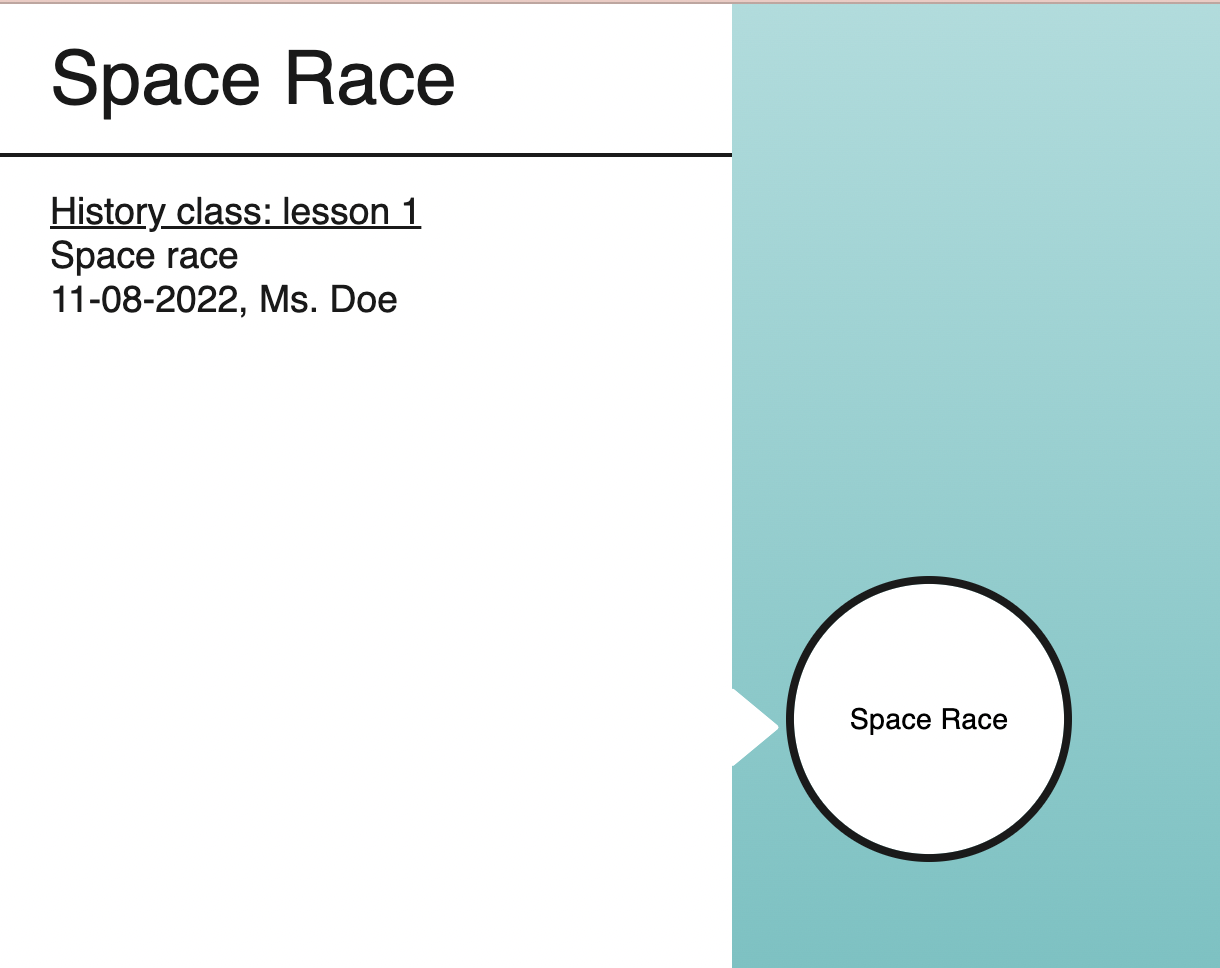
- Once you’ve found the main topic and put it in the center of what was once the blank page, it’s time to get networking. And no, we don’t mean to chat with colleagues at a conference – in this case, at least. Take a good look at your topic: what comes to your mind first? Write it down, and don’t worry too much about whether it’s right or wrong. Start building connections between the center topic and these aspects.
Since the class is starting in five minutes, we’re quickly going over the pages we were supposed to read before class. Some of the most important topics dance in front of our eyes, so we will add them to the mind map right away – before Mrs. Doe starts talking.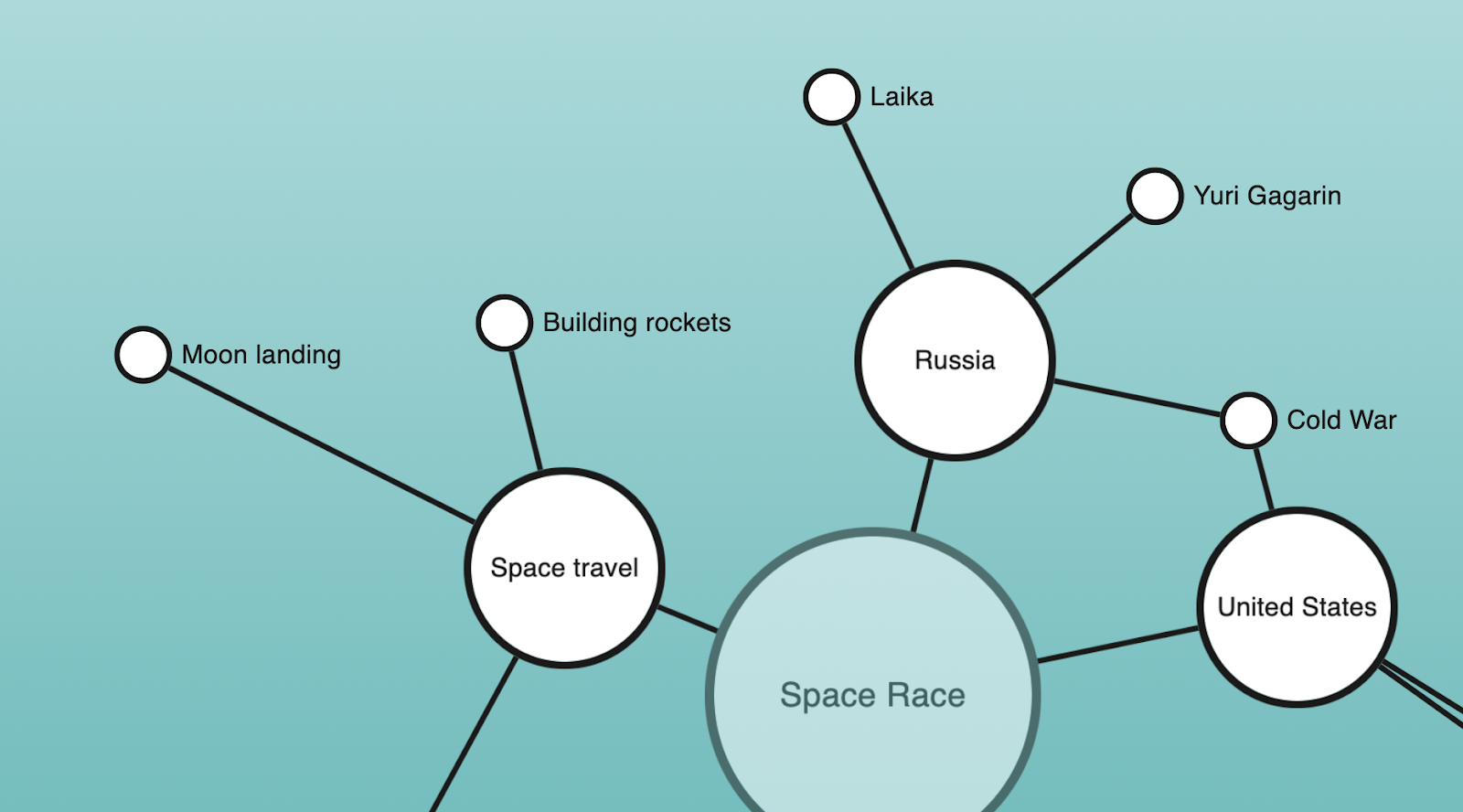
- Time to get radial! Thinking about those ideas, what do you think of? What you are doing now, is radiant thinking. You focus on one particular thing and your brain matches it with associated terms. Our brains love structure and making connections between things we already know and which are close together. And making new connections to new ideas from that structure comes quite naturally.
Oh, the class of Mrs. Doe turns out quite interesting! She not only elaborates on the topics you’ve already jotted down, but manages to put it into a larger perspective of politics and world order, as well as how the Space Race still affects things to this day. Since we’re making the mind map, we can see it in perspective quite clearly, without spending too much time on writing but not listening.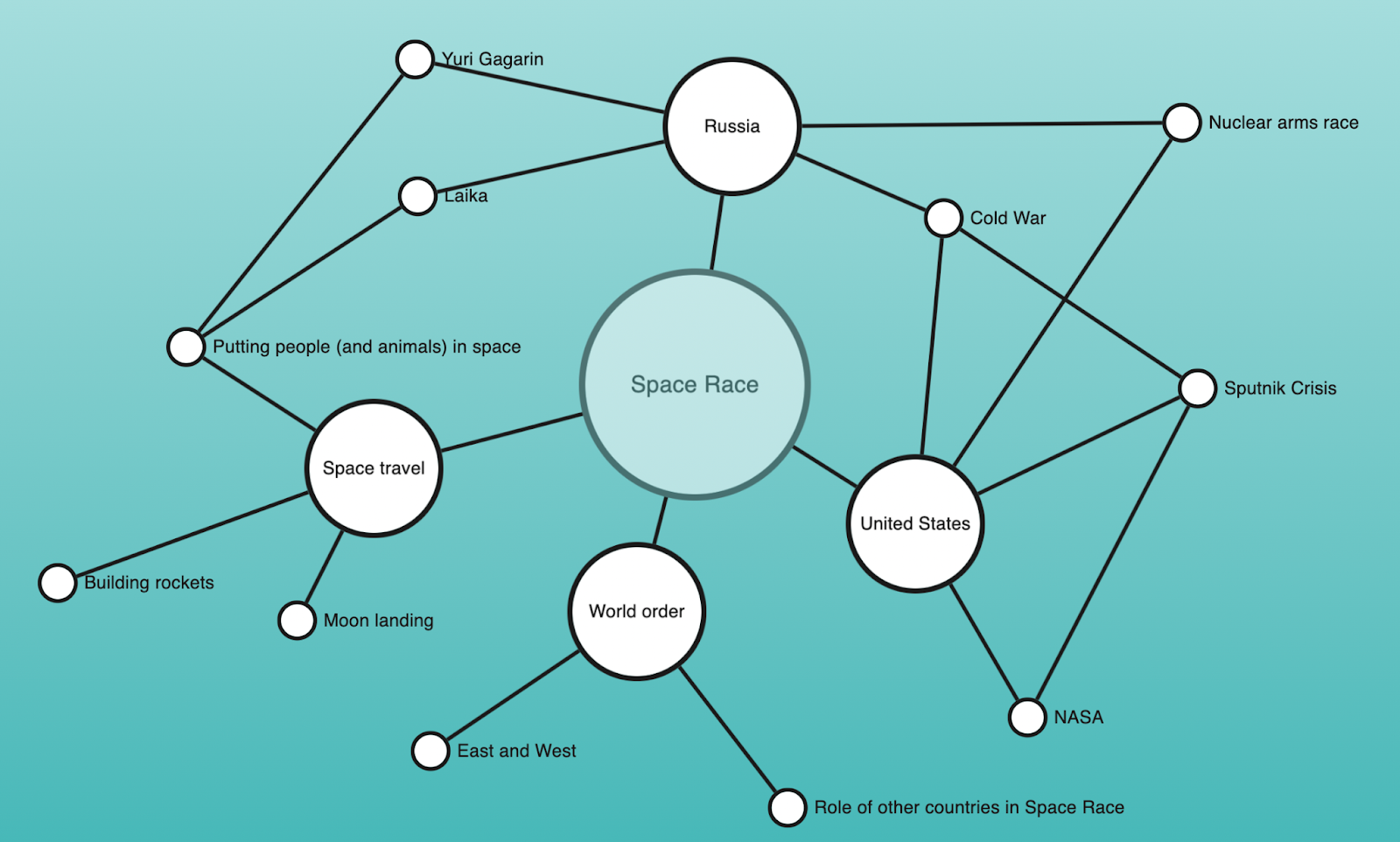
- Keep making new connections until you have become saturated. You might want to take a break and check-in later to see if you didn’t forget anything, or that you were just stuck on a topic. If that is the case, start asking yourself questions: Why am I running into a problem here?” It can also be beneficial to loop back to your main topic so you can run through your original train of thought again. Once you’re sure you’ve included it all, the mind map’s done!
In our case, we’ve decided to elaborate on certain topics by adding notes to each ‘bubble’ based on what the teacher was telling us during class. When the test comes, we’re sure to be ready for it!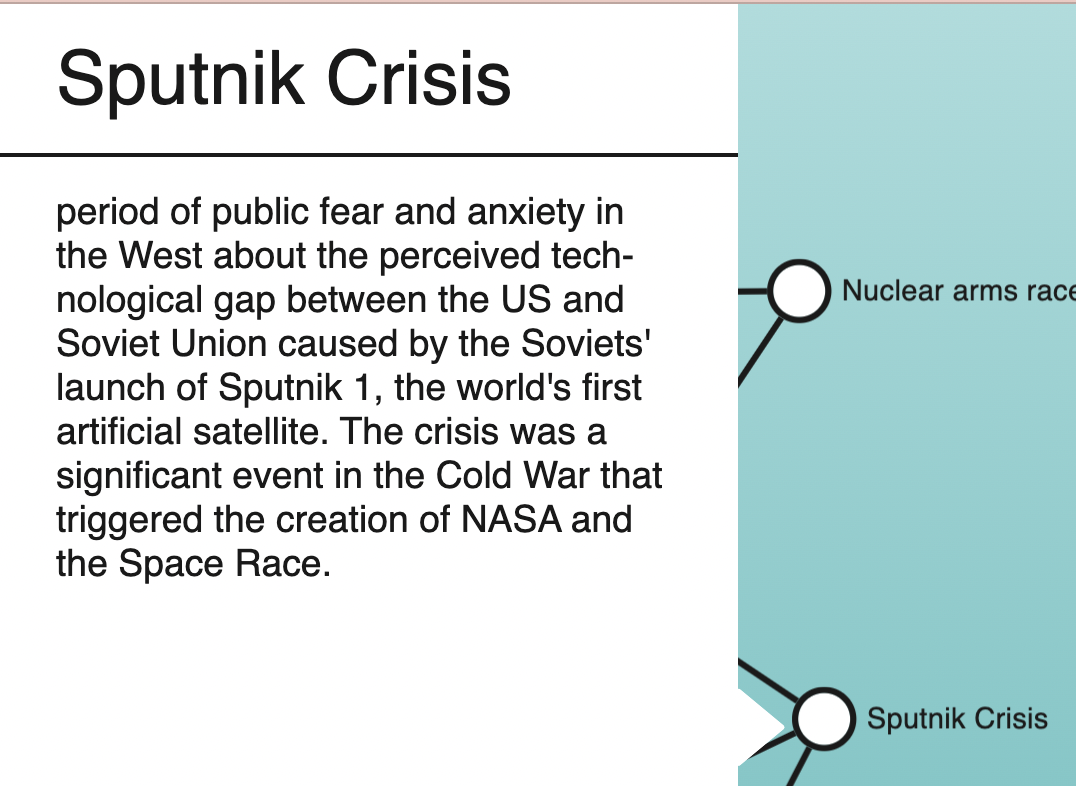
Visualisation is key
One thing to keep in mind when you’re working on your mind map: visualise, visualise, visualise. By adding in different colours for the branches as well as images for certain topics, we might remind ourselves at a later point in time what information is contained in the mind map. Buzan even suggests starting the mind map with just an image in the center to optimize this process. 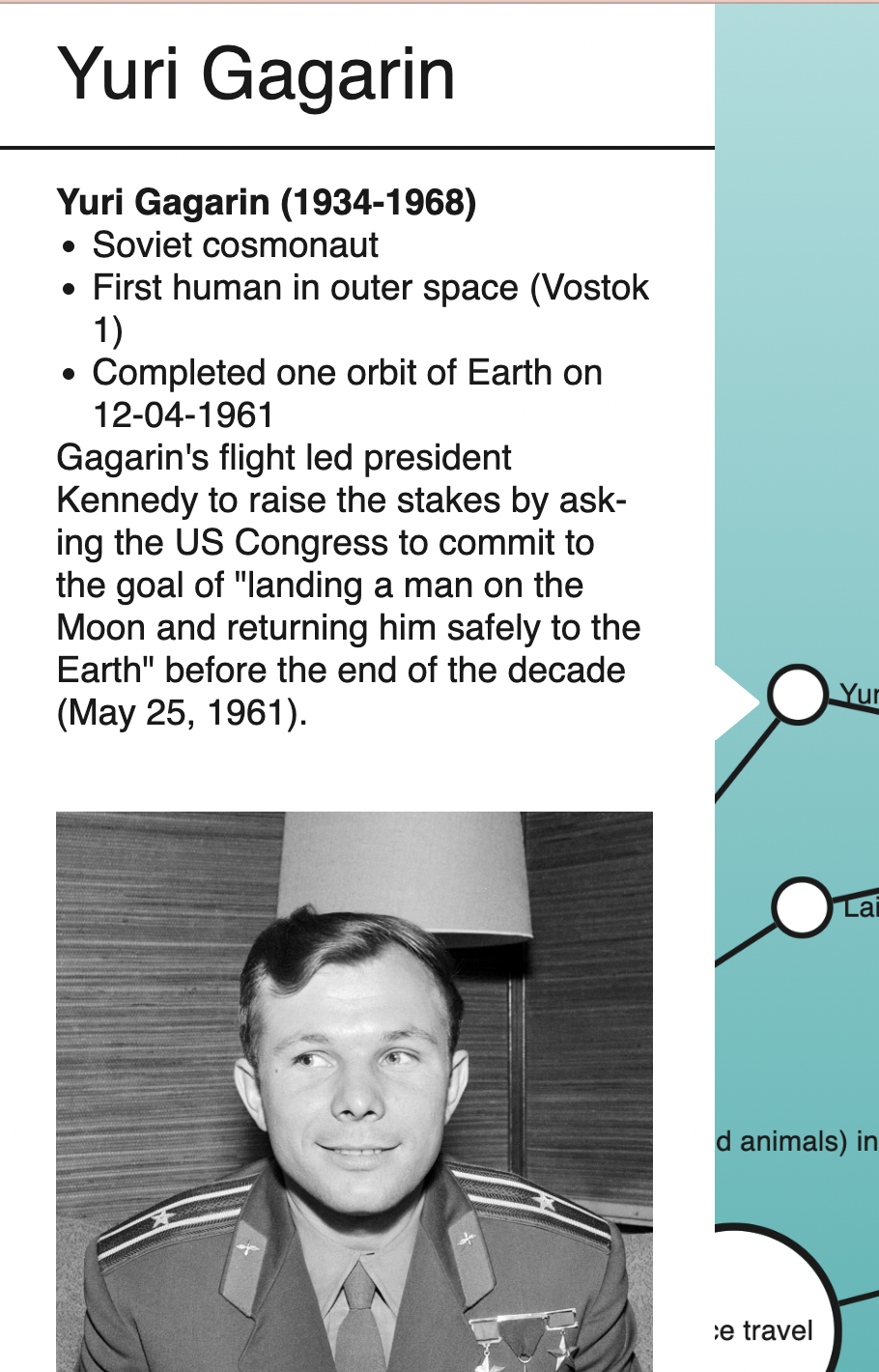
Another question that you should think of when you’re creating your mind map, is whether you want to go digital or not. While you might not always be able to create a mind map digitally, for instance in a classroom or on the go, the digital approach (of course using KontextMaps) has many upsides. Making mistakes or wanting to apply some changes, for instance, might become messy when you’re using the traditional pen and paper. Next to this, a digitalized mind map is easy to share with others anywhere around the world – for instance your classmate who was sick and can’t wait to hear all about Mrs. Doe’s class 😉
